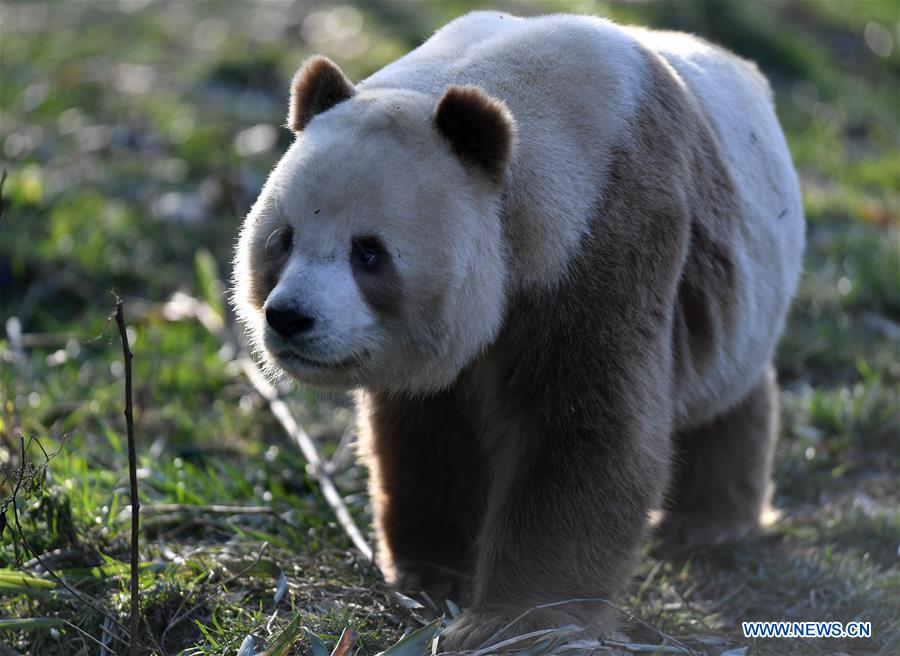


(Xinhua file photo)
In October, the Baishuijiang Nature Reserve, in northwest China's Gansu province, built a dynamic monitoring system to carry out automatic panda facial recognition.
Under the new system, six monitoring devices have been set up to allow workers to monitor pandas without having to go out into the forest areas.
According to China's Fourth National Giant Panda Survey, the Baishuijiang Nature Reserve is home to 110 giant pandas. To allow the public access to more panda photos and videos, the nature reserve started to employ infrared cameras several years ago.
The problem with infrared cameras is that the rangers need to change the batteries and memory cards regularly, which is why the new monitoring system was designed.
According to He Liwen, director of the giant panda management office at the nature reserve bureau, the system will automatically identify and take pictures of any wild animal within the monitoring area.
Facial recognition for people only needs to capture their facial features. However, the panda cameras need to capture the animals in many different positions, which makes it all the more difficult, said He, adding that they began working with other institutions to improve the accuracy of the system through mass archiving of photos.
Data show that the system first captured wild pandas around 5 p.m. on November 21. The equipment has taken more pictures of mother and baby pandas together in recent years, which suggests the population is relatively stable, said He.
 Fire brigade in Shanghai holds group wedding
Fire brigade in Shanghai holds group wedding Tourists enjoy ice sculptures in Datan Town, north China
Tourists enjoy ice sculptures in Datan Town, north China Sunset scenery of Dayan Pagoda in Xi'an
Sunset scenery of Dayan Pagoda in Xi'an Tourists have fun at scenic spot in Nanlong Town, NW China
Tourists have fun at scenic spot in Nanlong Town, NW China Harbin attracts tourists by making best use of ice in winter
Harbin attracts tourists by making best use of ice in winter In pics: FIS Alpine Ski Women's World Cup Slalom
In pics: FIS Alpine Ski Women's World Cup Slalom Black-necked cranes rest at reservoir in Lhunzhub County, Lhasa
Black-necked cranes rest at reservoir in Lhunzhub County, Lhasa China's FAST telescope will be available to foreign scientists in April
China's FAST telescope will be available to foreign scientists in April "She power" plays indispensable role in poverty alleviation
"She power" plays indispensable role in poverty alleviation Top 10 world news events of People's Daily in 2020
Top 10 world news events of People's Daily in 2020 Top 10 China news events of People's Daily in 2020
Top 10 China news events of People's Daily in 2020 Top 10 media buzzwords of 2020
Top 10 media buzzwords of 2020 Year-ender:10 major tourism stories of 2020
Year-ender:10 major tourism stories of 2020 No interference in Venezuelan issues
No interference in Venezuelan issues
 Biz prepares for trade spat
Biz prepares for trade spat
 Broadcasting Continent
Broadcasting Continent Australia wins Chinese CEOs as US loses
Australia wins Chinese CEOs as US loses